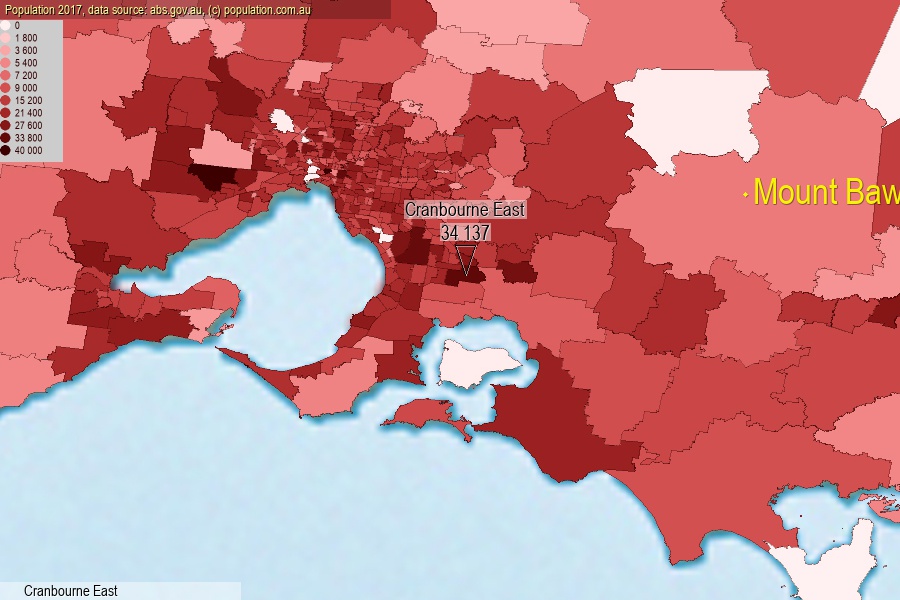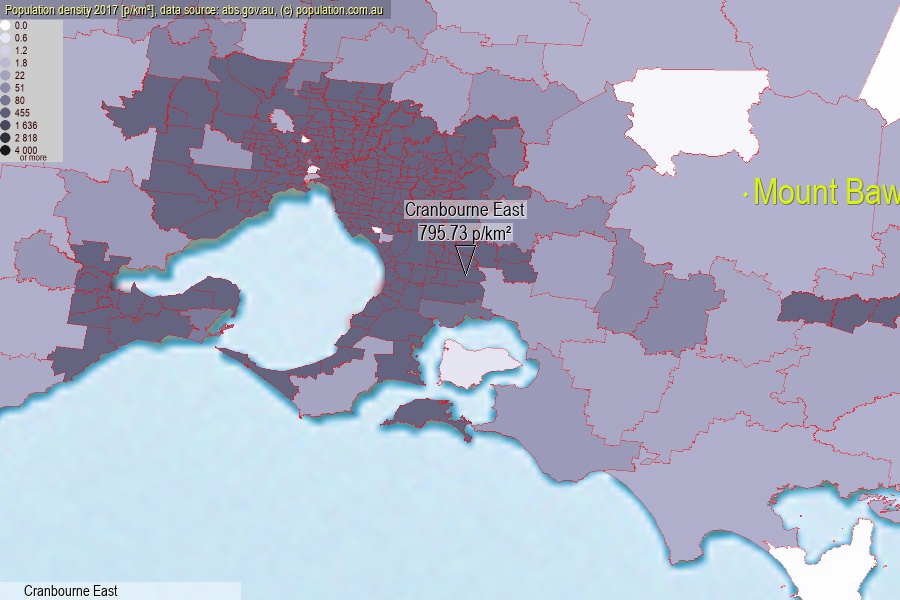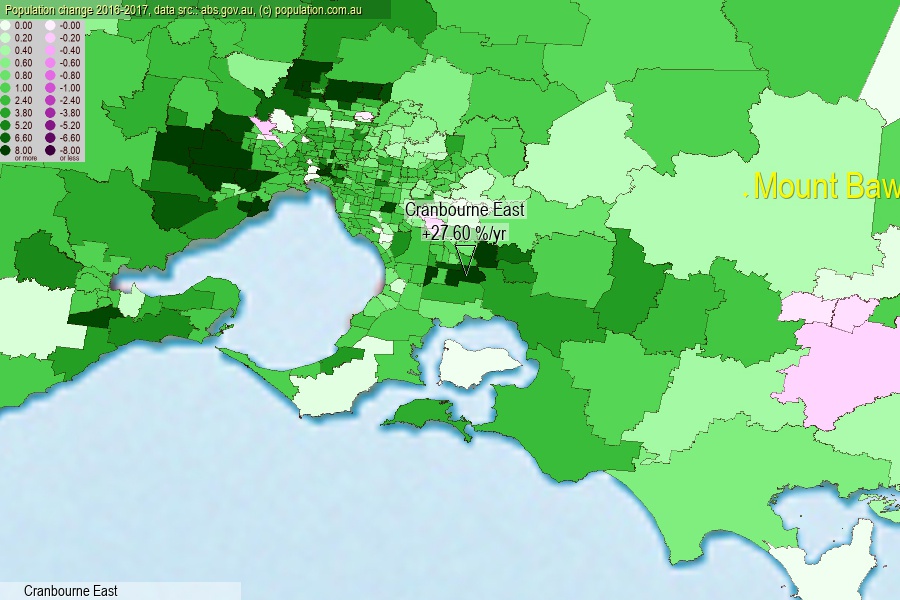 population.com.au
population.com.auLast official estimated population of Cranbourne East (as Statistical Area Level 2) was 34 137 people (on 2017-06-30)[2]. This was 0.14% of total Australian population and 0.531% of VIC population. Area of Cranbourne East is 42.90 km², in this year population density was 795.73 p/km² . If population growth rate would be same as in period 2016-2017 (+27.6%/yr), Cranbourne East population in 2025 would be 239 838. [0]



Click to enlarge. Cranbourne East is located in the center of the images.
Population [people], population density [p./km²] and population change [%/year] [2]
View borders » (new window) [4]
[1991-1992] -0.98 %/Yr.
[1992-1993] -1.98 %/Yr.
[1993-1994] -3.74 %/Yr.
[1994-1995] -1.94 %/Yr.
[1995-1996] -1.14 %/Yr.
[1996-1997] -1.00 %/Yr.
[1997-1998] -2.88 %/Yr.
[1998-1999] -3.45 %/Yr.
[1999-2000] -4.49 %/Yr.
[2000-2001] -2.26 %/Yr.
[2001-2002] +39.09 %/Yr.
[2002-2003] +40.33 %/Yr.
[2003-2004] +25.41 %/Yr.
[2004-2005] +24.59 %/Yr.
[2005-2006] +23.50 %/Yr.
[2006-2007] +14.85 %/Yr.
[2007-2008] +10.13 %/Yr.
[2008-2009] +16.09 %/Yr.
[2009-2010] +10.19 %/Yr.
[2010-2011] +21.92 %/Yr.
[2011-2012] +24.11 %/Yr.
[2012-2013] +21.01 %/Yr.
[2013-2014] +27.94 %/Yr.
[2014-2015] +32.21 %/Yr.
[2015-2016] +26.20 %/Yr.
[2016-2017] +27.60 %/Yr.
[0] Calculated with linear interpolation from officially estimated population
[1] Read more about SA2 and Australian Statistical Geography Standard (ASGS) on abs.gov.au
[2] Population data from Australian Bureau of Statistics (Population and density: 2017; change: 2016-2017)
[3] Digital Boundaries: Australian Statistical Geography Standard (ASGS) 2016.
[4] Border coordinates are simplifyed using Ramer-Douglas-Peucker algorithm.